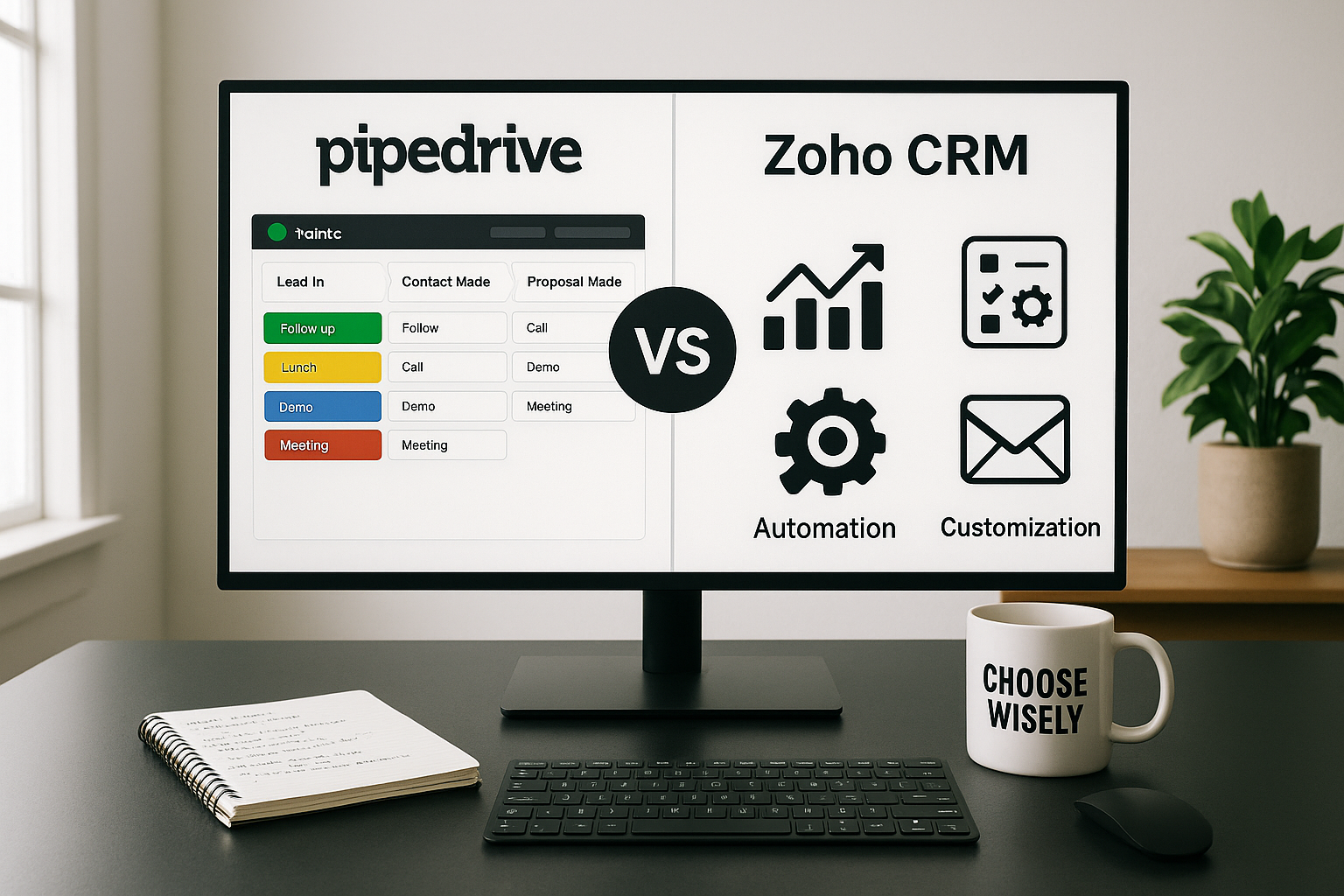Streamline your project management process and boost productivity with the best workflow management software available.
Here are other robust and feature-rich CRM systems:
-Mar-27-2024-01-16-53-6931-PM.png?width=300&height=150&name=%D0%94%D0%B8%D0%B7%D0%B0%D0%B9%D0%BD%20%D0%B1%D0%B5%D0%B7%20%D0%BD%D0%B0%D0%B7%D0%B2%D0%B8%20(4)-Mar-27-2024-01-16-53-6931-PM.png)
Salesforce
Salesforce is an industry leader known for its mammoth feature set and endless customization options. The platform can adapt to any industry, from manufacturing to insurance.
-Mar-27-2024-01-21-57-6217-PM.png?width=300&height=150&name=%D0%94%D0%B8%D0%B7%D0%B0%D0%B9%D0%BD%20%D0%B1%D0%B5%D0%B7%20%D0%BD%D0%B0%D0%B7%D0%B2%D0%B8%20(2)-Mar-27-2024-01-21-57-6217-PM.png)
Pipedrive
Pipedrive CRM is a user-friendly platform that is effortless to master. It is the creative web designer's secret weapon in the world of Customer Relationship Management.
-Mar-27-2024-01-30-24-0208-PM.png)
Zoho
It is a web-based email marketing management service for small and medium businesses. It automates the entire marketing process - from managing your email marketing campaign to maintaining mailing lists.

Fireberry
Fireberry’s most distinct and advantageous feature is its customization abilities. You can take the pre-built system and then personalize it to your specific business’s details, workflow, pipelines, and more.
Benefits of Workflow Management Software
Workflow management software offers a range of benefits for businesses that rely on efficient project management. One of the key advantages is improved collaboration and communication among team members. By centralizing project information and providing real-time updates, workflow management software ensures that everyone is on the same page and can easily track the progress of tasks.
Another benefit is increased efficiency and productivity. With workflow management software, project managers can automate repetitive tasks, set up reminders and notifications, and streamline approval processes. This not only saves time but also reduces the likelihood of errors and delays.
Workflow management software also enables better visibility and transparency. Project managers can easily track the status of tasks, identify bottlenecks, and make informed decisions to keep projects on track. Additionally, workflow management software often comes with reporting and analytics capabilities, allowing businesses to gain insights into project performance and identify areas for improvement.
Lastly, workflow management software helps ensure adherence to deadlines and improves overall project accountability. By setting deadlines and assigning responsibilities, project managers can ensure that tasks are completed on time and that team members are accountable for their deliverables.
Key Features to Look for in Workflow Management Software
When choosing workflow management software, it's important to consider the key features that will best suit your business needs. One essential feature is task management, which allows you to create and assign tasks to team members, set deadlines, and track progress. Look for software that offers customizable task templates and the ability to create task dependencies.
Another important feature is collaboration tools. Look for software that provides a centralized platform for team members to communicate, share files, and collaborate on tasks. Features like real-time messaging, file sharing, and commenting can greatly enhance collaboration and productivity.
Integration capabilities are also worth considering. Look for software that integrates with other tools and platforms that your team uses, such as project management software, communication tools, and document management systems. This will ensure seamless data flow and minimize the need for manual data entry and duplication.
Workflow automation is another key feature to look for. This allows you to automate repetitive tasks, create workflows with predefined steps, and set up triggers and notifications. Automation can save time, reduce errors, and improve overall efficiency.
Lastly, reporting and analytics capabilities can provide valuable insights into project performance and help you make data-driven decisions. Look for software that offers customizable reports, visual dashboards, and the ability to track KPIs and metrics relevant to your projects.
Robust Enterprise CRM Platform

4.3
- Cloud-based
- On-premise
Top Workflow Management Software Solutions
There are several top workflow management software solutions available in the market today. One popular option is Trello, a flexible and user-friendly software that allows you to create boards, lists, and cards to manage your projects. With features like task management, collaboration tools, and integration capabilities, Trello is widely used by teams of all sizes.
Another popular choice is Asana, which offers a comprehensive set of features for project management and workflow automation. Asana allows you to create tasks, set deadlines, assign responsibilities, and track progress. It also offers collaboration tools, integration capabilities, and reporting features.
For businesses looking for more advanced workflow management software, Jira is a top choice. Jira offers a wide range of features, including customizable workflows, issue tracking, and advanced reporting and analytics. It is particularly popular among software development teams.
Other notable workflow management software solutions include Monday.com, Wrike, and ClickUp. Each of these software options has its own unique features and strengths, so it's important to evaluate your specific business needs and choose the one that best fits your requirements.
How to Choose the Right Workflow Management Software
Choosing the right workflow management software for your business can be a daunting task. To make the process easier, consider the following factors:
1. Identify your business needs: Before evaluating different software options, clearly define your business needs and requirements. Consider factors such as the size of your team, the complexity of your projects, and the specific features and functionalities you need.
2. Evaluate ease of use: Look for software that is intuitive and user-friendly. Consider the learning curve for your team and choose software that will be easy to adopt and use on a daily basis.
3. Consider scalability: Think about the future growth of your business and whether the software can scale with your needs. Look for software that offers flexible pricing plans and the ability to add or remove users as needed.
4. Check integration capabilities: Consider the tools and platforms that your team already uses and ensure that the workflow management software can integrate seamlessly with them. This will help avoid data silos and streamline your workflow.
5. Read reviews and testimonials: Research user reviews and testimonials to get insights into the experiences of other businesses. Look for software that has positive reviews and a proven track record.
6. Take advantage of free trials: Many workflow management software providers offer free trials. Take advantage of these trials to test the software and determine if it meets your needs before making a final decision.
Best Practices for Implementing Workflow Management Software
Implementing workflow management software requires careful planning and execution. To ensure a successful implementation, consider the following best practices:
1. Clearly define goals and objectives: Before implementing the software, clearly define your goals and objectives. What do you hope to achieve with the software? How will it improve your project management process?
2. Involve key stakeholders: Involve key stakeholders, such as project managers and team leaders, in the decision-making process. Get their input and ensure that the software meets their needs and requirements.
3. Provide training and support: Proper training is essential to ensure that team members understand how to use the software effectively. Provide comprehensive training sessions and ongoing support to address any questions or issues that may arise.
4. Start small and gradually scale up: It's often best to start with a pilot project or a small team when implementing workflow management software. This allows you to test the software, identify any challenges, and make adjustments before rolling it out to the entire organization.
5. Monitor and evaluate performance: Regularly monitor and evaluate the performance of the software. Collect feedback from team members and stakeholders and make adjustments as needed to optimize its usage.
By following these best practices, you can maximize the benefits of workflow management software and improve your project management process.




(2).jpg)
